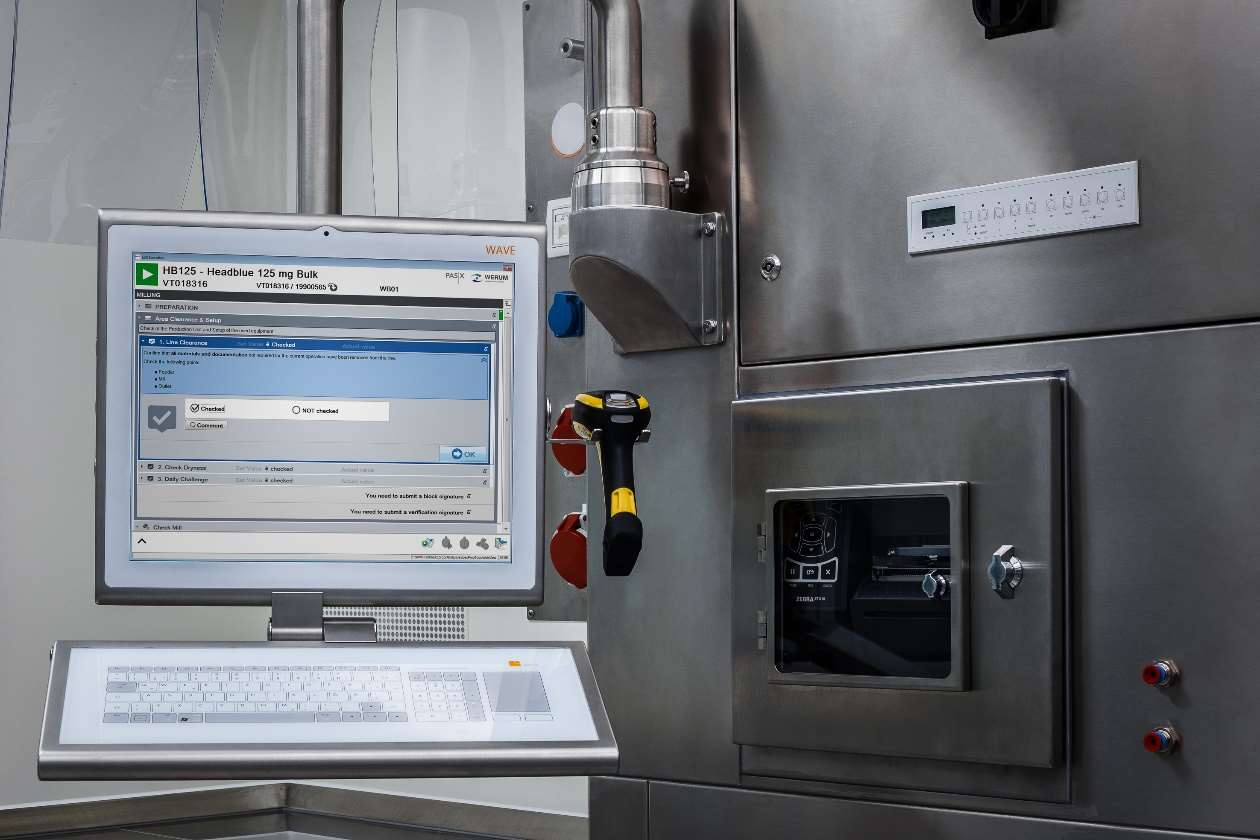Improving Operations Through Electronic Batch Records
October 10, 2020

Electronic Batch Records Overview
In the world of pharmaceutical production, the integrity and completeness of an Electronic Batch Record (EBR) is of utmost importance for product safety, traceability, and regulatory compliance. The EBR provides a complete summary of all activities that contributed to the batch, from records of raw materials, through blending processes, recipes, dispensing of measured quantities, mixing, granulation, to encapsulation or other finishing processes, and quality assurance activities. Each stage of the process may generate quality records, but the EBR provides a record for the entire process.
Click Here to download the Whitepaper.
To meet ever more stringent regulatory requirements and to help ensure consumer safety and product traceability, it makes sense both economically and from a quality perspective to incorporate an electronic batch record system into pharmaceutical production facilities. Grantek can help with customizing data flow and ensuring data integrity to help ensure that the right data is sent to the EBR system. Grantek has past experience working with most of the popular EBR vendors to ensure the production equipment is configured to send the correct data to the EBR system.
Contents of the Electronic Batch Records
Each operation required for producing a pharmaceutical product may automatically produce electronic records to indicate that the operation was done correctly and within specifications, but a batch record is also needed to provide an end-to-end record of production specific to each batch. The EBR is a culmination of all records from the beginning to the end of the entire process that overlays the accumulated production records for each process step unique to each batch.

Prior to the development of electronic batch record generation systems, typically the production records for each individual process were appended to the final batch record generated manually by Quality functions. Many facilities still create batch records using paper and ink signatures, but the industry is trending toward the creation of automated electronic batch records with 21 CFR Part 11- compliant electronic signatures.
There are several specialized firms providing software packages that create EBRs. Grantek’s role in the implementation of an EBR system is to assure the underlying data integrity from each process step, and ensure the production data is properly sent to the EBR system, creating a complete record of each batch. Grantek can interface production line machinery control systems to most popular EBR packages including PAS-X from Werum.

The EBR is a workflow, a report, and an accumulation of data from all steps in the manufacturing process. Grantek can ensure compatibility with any EBR software vendor, working with the vendor and the customer to ensure the proper process parameters, as well as alarms, trends, approvals, and other process data associated with each batch, is passed from the production equipment to the EBR system.
The EBR system collects data, but it is not a control system. It merely collects data, including any deviations, such as incorrect speed, from the intended process. This requires the EBR system to allow for additional steps in the workflow that may be required to ensure the quality of the finished batch, such as reviewing process deviations that may have occurred and determining if additional testing or sampling is required.
The final EBR report includes records of any alarms and/or deviations that occurred during batch production. It can also be programmed to address exceptions and remediation’s that took place.
Grantek’s Role in EBR Implementation
While most EBR software development companies have the knowledge and expertise to generate EBRs, to produce accurate EBRs, the EBR system must acquire the correct data from the production control systems. To accomplish this, customization is typically needed on both the control side and the EBR side to achieve compliance. Grantek excels in analysis and performance of this task with our extensive experience in the industry as well as our relationships and experience working with the primary vendors of EBR packages.
Compliance requirements for an EBR vary widely and are primarily based on regulatory requirements. The EBR software is capable of generating workflows, but the workflows must be customized to match the facility’s processes. To avoid the need for revalidation of processes, the EBR package can be customized to match the validated processes, rather than changing the process to suit the EBR’s workflow and possibly triggering a requirement for revalidation of one or more processes.
Grantek’s extensive experience as a system integrator allows us to efficiently reconfigure or reprogram the data passed to the EBR from the process control system at each step of a batch’s processes, thereby tailoring the data output to provide the data needed for the EBR. This typically requires an interface to an intermediary database, and Grantek is uniquely qualified to ensure the interface to the database is correctly constructed and customized. Grantek’s many years of experience as a systems integrator allows us to delve into the nuts and bolts of EBR system implementation.
The interface layer is typically compliant with OLE for Process Control (OPC) to allow standardized communication with products from various vendors. OPC is a common protocol in manufacturing
control systems that is used by applications to poll devices for real-time data, and it provides a standardized data format for manufacturing system PLCs to share data with other applications such as HMIs and Historians. Grantek’s expertise and experience allows us to customize the database interfaces to ensure the data from the control system PLCs is OPC-compliant, is suitable input to the EBR system, and is available for use by Historians and trending applications.
With the additional pharmaceutical industry requirements for track and trace as well as serialization, some EBR vendors offer add-ons for track and trace capabilities. Grantek’s experience with MES and track and trace allows us to also customize data from the packaging side of production to ensure the right information is sent to the EBR. In general, the EBR contains the batch production records, and the track and trace records handle the packaging.
Why trust Grantek with your electronic batch records?
Only a system integrator with Grantek’s expertise and experience can ensure that the proper data for EBR is acquired and passed to the data collection systems accurately and consistently. The EBR systems expect certain data inputs, but it is up to an experienced partner such as Grantek to ensure the correct data is provided to the EBR system throughout the pharmaceutical manufacturing process.
